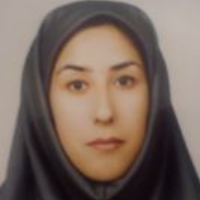An Investigation of Innovation in Inlay Style of Qajar Period Case Study: Inlaid pulpit Preserved at Golestan Palace
Inlay is one of the methods of decorating the surface of wooden objects, notable examples of which have remained in artistic treasuries and collections from the Al-Muzaffar period to the present. A collection of inlaid works can be found in art galleries inside and outside of Iran as well as in architectural decorations. According to what is justified based on the technical analysis of the endings of the Qajar period, the technical, artistic, and original values of the works are of great importance in this period. Endings like many other artifacts are part of a cultural heritage which identification and artistic characterization are of importance and necessity, while preserving data acts as a guide to identifying prominent features, including innovations in style of inlaid works at the end of the Qajar period. This art has its ups and downs during its historical passage and it is possible to say that it has not gone through an absolute depression artistically. Studies have shown that the Qajar period is one of the most important periods during which prominent inlaid works inside and outside of Iran are created by Iranian artists. Today's information about inlay, particularly inlay during the Qajar period, is little and written essays have more focused on non-specialized description, not paying attention to the technical characteristics of the course of the history of this art. In this research, Inlaid pulpit preserved in the Historical Cultural Complex of the Golestan Palace is presented as a case study that has important trait of the inlay in the Qajar period. The sampling method was selective. Initially explained by the information collected during the Qajar period and finally by analyzing the information, the authors came up with the characteristics of innovation in the way termination of this period ended. The qualitative method was also used to analyze the data used in this study. The purpose of selecting the pulpit is to provide technical analysis as well as to obtain more accurate and up-to-date information on innovation in the Qajar period. The question of this study was what are the features and innovations of the Qajar period and how did it appear in the pulpit under study? The paper uses descriptive-analytical method in gathering materials while using library resources, field research including surveying and viewing the pulpit, as well as interviews. The results of the present study show that, in addition to the innovations in construction, the Qajar period has had some innovations in inlay which are ignored by scholars and aim to analyze the characteristics of authenticity in inlay. The hypothesis used in this study is that inlay in the Qajar Style that was a continuation of the path of the ancestors; in many cases has manifested innovations. Considering the description of this period as a period of decline, in this article after explaining inlay and analyzing the inlaid pulpit, which is kept in the Historical Cultural Complex of the Golestan Palace, the innovative features in the Qajar inlay style have been listed. During the Qajar era, inlay patterns have been designed based on the intended geometrical forms, drawing on various shapes of triangle. In this method, which has been unprecedented prior to the Qajar period, pre-made patterns and cuts were put together side by side to fill any given background; a technique which has continued to the present time and manifested in rare cases. Using local materials rather than imported ones, such as bone instead of ivory, is anther innovation which occurred in this period. In this technique, colorful raw materials, namely a variety of woods, were used to make the inlaid works. Prior to this, in the Safavid-era inlay, merely the died bone (which was green) was used, but in the Qajar period to achieve colors such as red, woods would be died. It is noteworthy to mention that this technique was first applied during the Zand period, but the extent of the innovations and use of colors reached their peak in the Qajar era. These changes and transitions are reflected in many remaining works from the Qajar period and as discussed in this paper, the above-mentioned features may well be observed in the studied inlaid pulpit as well. To better portray these innovations, the features of the Qajar-era inlay have been compared with the Safavid and the contemporary examples.
Inlay , pulpit , Qajar Dynasty , Golestan Palace , Tekyeh , Dowlat
- حق عضویت دریافتی صرف حمایت از نشریات عضو و نگهداری، تکمیل و توسعه مگیران میشود.
- پرداخت حق اشتراک و دانلود مقالات اجازه بازنشر آن در سایر رسانههای چاپی و دیجیتال را به کاربر نمیدهد.



